Will Balmoral Provide Queen Elizabeth With a Summer of Peace?
- Oops!Something went wrong.Please try again later.
- Oops!Something went wrong.Please try again later.
- Oops!Something went wrong.Please try again later.
- Oops!Something went wrong.Please try again later.
- Oops!Something went wrong.Please try again later.
- Oops!Something went wrong.Please try again later.
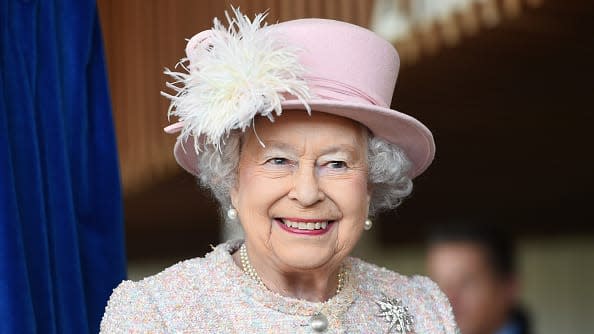
Royalist is The Daily Beast’s newsletter for all things royal and Royal Family. Subscribe here to get it in your inbox every Sunday.
Queen Elizabeth just made the trip north to her most beloved retreat, Balmoral, an ersatz Scottish castle sitting on 50,000 ravishing acres of the Highlands west of Aberdeen—and a world away from the unrelenting goldfish bowl of royal family life south of the border. This summer, as she always has, the queen has returned to Balmoral seeking the calm only it can provide. Observers wonder if this year will be her last time there as monarch.
One of her duties this year, unusually, will be to “send for” a new prime minister, the ritual audience that confirms a change in political leaders. This is due to happen on September 5, with the election of her fifteenth prime minister, a number unequalled in history.
The BBC has reported that Boris Johnson, recently resigned but still in post until his successor has been crowned, may travel for the prime minister's annual audience at Balmoral—if a new leader is not chosen beforehand. At the same time, the exit of Johnson and the bare-knuckled fight in the Tory party to decide his successor have drawn attention away from the queen’s own future.
Queen Elizabeth Warns Press Photographers to Stay Away From Balmoral—and Prince Andrew
Consultations about how and when the queen might choose to step down are haunted by the implications of two words: Regency and abdication.
The Regency Act of 1937, which updated previous versions that originated in the eighteenth century, is very specific about the constitutional step that has to be taken if a living monarch is to be replaced by a regent until that monarch dies. It requires a “declaration of incapacity, due either to infirmity of mind or body.”
There is no provision for a simple decision by the monarch to retire, because in 1937 nobody foresaw that there could be another cause to give up the job: living so long that old age slows you down.
At 96, the queen is not incapacitated in either mind or body—except for the obvious problem of greatly reduced mobility. That means that she is no longer up to the demands of the day job as she herself had always met them.
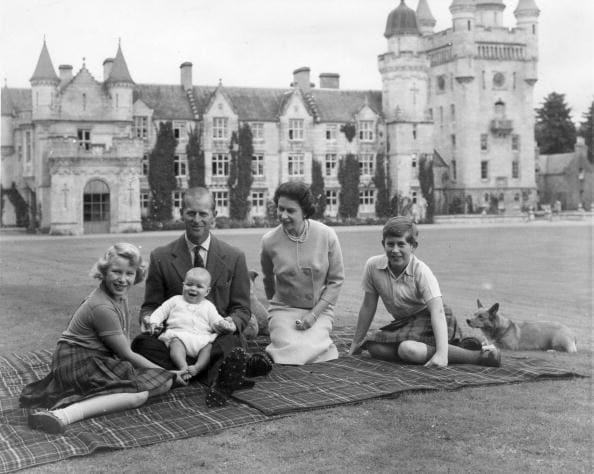
9th September 1960: Queen Elizabeth II and Prince Philip, Duke of Edinburgh with their children, Prince Andrew (centre), Princess Anne (left) and Charles, Prince of Wales sitting on a picnic rug outside Balmoral Castle in Scotland.
The Regency Act is stigmatized because it implies that the monarch is seriously sick. The ghost that always hovers over that condition is George III, who in 1811 was judged to be “violently insane.” He lived until 1820 while his son, the Prince of Wales, took over as regent. (The Prince was a notorious rake, but on becoming regent, and later as George IV, got his act together, surprising everybody with his political skills and cultural sophistication.)
A ”declaration of incapacity” has to be signed by three or more officers of the crown—the Lord Chancellor, the Lord Chief Justice or the Master of the Rolls (a senior judge)—and the speaker of the House of Commons. They have to present supporting medical evidence—a process that smacks all too much of the salutary measures that put away George III, rather than a civilized agreement that clears the way for Charles as regent. In effect, there is no mechanism to take the simple step of allowing the queen to retire, like any normal mortal.
At the same time, the act of abdication is similarly toxic because of Edward VIII, later Duke of Windsor, who abdicated in 1936. He was a weak-willed proto-fascist who chose marriage to a divorced woman, Wallis Simpson, over service to the crown. His departure made the young Princess Elizabeth next in line for the throne after her father, George VI, changing her life forever. Nobody understands better than she does the iniquity of the quitter. That’s why the queen won’t quit by such means, which leaves the whole issue of succession in limbo.
Pressure is mounting on the family’s advisors to more clearly explain how the succession will be managed. The queen will want to step down in a way of her own choosing that does not look forced on her for health reasons. Prince Charles has been scrupulously careful about not appearing to be impatient to be enthroned after spending so long preparing for the job, even though it is known that he is eager to take a tough line with the bloated ranks of the Windsor family and their generous entitlements.
Charles is also aware that Scotland will very likely provide one of the earliest tests of his reign. Calls are growing for Scotland to be given the freedom to again choose between remaining part of United Kingdom or to become an independent nation. Breaking away would bring a constitutional crisis in which the monarch is powerless to intervene, even though his realm would be dismembered.
If that were to happen, Charles would—in the words of one Scottish commentator—“keep his head well down and keep on saying how wonderful the Scots are.”
The biggest challenge to an idyllic summer: her family
This year, the combination of mobility issues and COVID caution rules out many of the queen’s traditional Balmoral activities, from walking the hills to dining in the lunch hut (made unhappily famous after photos of Ghislaine Maxwell and Jeffrey Epstein posing on its deck were published by American prosecutors during Maxwell’s trafficking case).
Also seemingly impossible are attending the Braemar Highland Games or the fete in the local village of Ballater. The annual Ghillies Ball, a party thrown for the local staff and their circle at the house, is likely to go ahead, but the queen’s presence must be considered highly doubtful.
And that is before you get to the ongoing tensions within the family itself.
Sources within the palace won’t comment on who will or won’t be coming. Indeed, there is every chance that given decisions are being made only at the last minute, no-one, not even the queen, really knows for sure.
But it is clear is that the politics of the family, which are particularly complex and delicate at this juncture in royal history, are adding to the logistical challenges of delivering the queen an idyllic Scottish summer.
Andrew is almost certain to spend an extended period of time in Scotland by his mother’s side, not least because he has nothing else to do now that his stream of summer invitations has all but dried up, and traveling overseas exposes him to the lenses of paparazzi photographers in a way that being at home, enveloped by the royal security apparatus, does not.
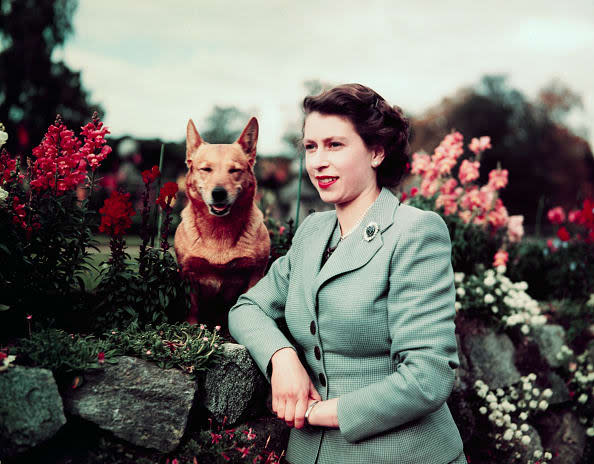
Queen Elizabeth II of England at Balmoral Castle with one of her Corgis, 28th September 1952.
But Charles and William are unlikely to countenance visiting the castle while Andrew is there. Sleeping under the same roof as Andrew would encourage speculation that they are OK with him. That is not part of their succession plans. Edward, who had been understood to be more flexible about being seen with Andrew, has also hardened his position, apparently refusing to ride in Windsor Great Park now, lest he be accused of riding with Andrew.
Perhaps to the relief of all concerned after the unsatisfactory jubilee weekend, Meghan and Harry seem deeply unlikely to leave the Californian summer for a week of rain in Scotland, although their spokesperson did not respond to a formal enquiry on the matter from The Daily Beast.
Prince Harry and Meghan Markle Are So Far Enduring an Ice-Cold Platinum Jubilee
While a source close to Her Majesty insists there will be the usual stream of guests and the usual series of public engagements, it’s hard to imagine a world in which visitor numbers are not significantly reduced, with only the closest family and friends allowed in the ailing queen’s orbit.
Partly this is due to the queen’s ongoing overall health issues, referred to by the palace as “episodic mobility problems”, which have seen her dramatically cut back on all commitments in recent months. But the ever-present fear of COVID, currently resurgent in the U.K., is, of course, also a factor. A nasty bout of the virus could well be fatal for a weakened 96-year-old.
The long royal love affair with Balmoral
The Windsors were latecomers in joining the ruling caste of Scotland through land ownership, although they have worked hard to drape themselves in tartan, embracing all the customs of the national culture, including having a piper play every morning before breakfast.
Balmoral was discovered in 1847 by Queen Victoria and her architecturally inventive consort, Prince Albert. The 1,500 castles of Scotland are a foundational part of the national legend, reminders of a history of warrior clans that for centuries repelled the English invaders, but Balmoral is not an authentic member of that company.
It remains very much as conceived by Albert when he demolished the original and built a new one incorporating features his magpie taste picked up from Bavaria and Belgium with turrets added as a nod to their Scottish baronial neighbors. One snooty courtier complained that there was “a certain absence of harmony.”
But the tonic qualities of Scotland worked their magic on Victoria, who began the habit of the late summer retreat and, at the end of one summer she wrote to one of her children, “I feel so sad at the bitter thought of going from this blessed place, leaving these hills—this charming life of liberty—and returning to tame, dull, formal England and the prison life of Windsor.”
Queen Elizabeth probably feels the same way. Her “Scottishification” began in early childhood with holidays spent at Glamis Castle, family seat of her mother, Elizabeth Bowes-Lyon. Once the queen and Prince Philip became the laird-like landlords of Balmoral they went all-in with the rituals, dominated by the field sports of grouse shooting and stag hunting. (Young Prince George has already been introduced to blood sports by watching his father at a shoot near Balmoral.)
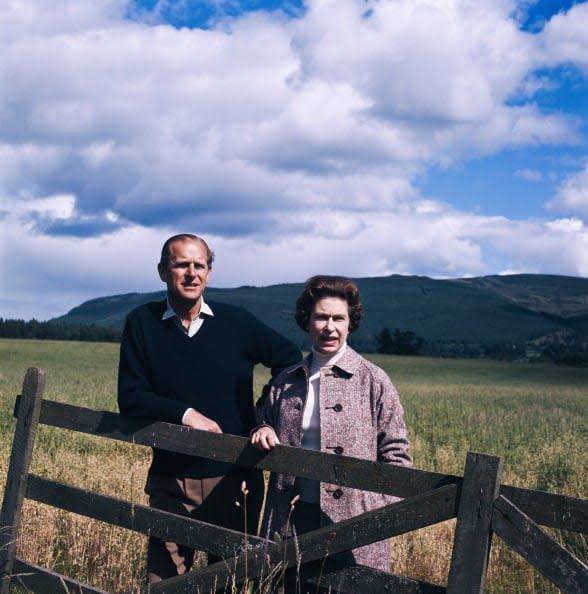
Queen Elizabeth II and Prince Philip at Balmoral, Scotland, 1972.
Some guests recoiled on joining this scene. Margaret Thatcher and her husband Denis were famously unsuited to it (although the version of that experience in The Crown is wildly over the top), and Princess Diana certainly had no love of it.
Guests have noted an awkward blend of Edwardian formality and royal relaxation: The men leave with the shooting parties in the morning, the queen and her dogs drive out into the hills for lunch, all of this bloodlust contrasting with picnic parties where Philip was master of the barbecue and all sense of rank momentarily vanished. This year, the absence of Philip and his influence as both host and family counsel will be palpable.
When the queen and other members of the family arrive at Balmoral they will be accompanied by key members of the royal household, ranging from their personal staffs to an entourage of secretaries and flacks. They inhabit a warren of rooms and corridors alongside some of the backstairs staff. This summer, as well as handling ongoing issues about the queen’s health, they will be measuring the temperature of Scottish opinion on the future of the monarchy.
In the last decades of her reign, Scotland has tested the queen’s political acumen more than any other part of the United Kingdom. In theory, of course, she’s not supposed to be political. But Scotland has served as an early warning system for rumblings of republicanism. In 2014 there was a critical referendum to decide whether or not the Scots wanted independence. A “yes” vote would have unraveled the union established in 1707 and shaken the whole structure of the queen’s realm.
On the eve of the referendum, speaking at a church service, close to Balmoral, the queen broke her normal code of silence and said, “I hope people will think very carefully about the future.” With that lightest of nudges, it was clear what she felt. How far that actually influenced the result, rejection of independence, is impossible to know. Questions about the economic viability of an independent Scotland without hefty subsidies from London certainly played a role.
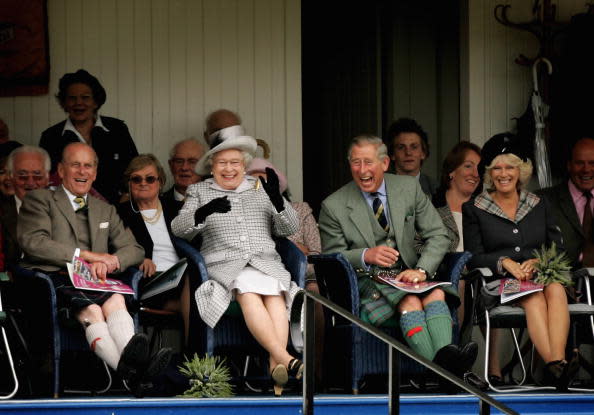
Prince Philip, Duke of Edinburgh, Queen Elizabeth II, Prince Charles, The Prince of Wales and Camilla, Duchess of Cornwall break into laughter as they watch Balmoral compete in the tug-of-war during the Braemar Gathering at the Princess Royal and Duke of Fife Memorial Park on September 2, 2006 in Braemar, Scotland.
Since then, the Scottish National Party, which dominates the Scottish parliament, has pledged that if a future referendum went their way they would still accept the queen as head of state. In 2014, Alex Salmond, then the party leader, a close friend of Prince Charles, visited the queen at Balmoral and announced: “I want the queen as head of state, as queen of Scots of an independent Scotland, as her ancestors were.”
Salmond’s successor, Nicola Sturgeon, has not been such a fan. She was openly aghast at the queen’s reluctance to banish Prince Andrew, a problem made worse when the photo, mentioned above, emerged of Jeffrey Epstein and Ghislaine Maxwell at a Balmoral hut in 1999 as guests of Andrew. Sturgeon conspicuously failed to send a message of loyalty for the Platinum Jubilee. There is a vocal republican faction in the SNP. In fact, Scotland, like Australia, demonstrates that it is probably only affection for the queen that stands in the way of a surge of republicanism.
This puts pressure on the heir. Charles has recalled that the darkest part of his youth was in Scotland, at the penitential Gordonstoun school. Comparing it to a notorious Nazi prison-of-war camp, he called it “Colditz in kilts.” Since then, though, he has been won over by the Brigadoon repertoire of Balmoral. Locals praise him for not being “a weekend Scotsman” but a traditional countryman who, like his father, is a good shot and loves traditional customs like tossing the caber (the herculean lofting of logs that has the appearance of a Monty Python sketch) and dancing the Highland Fling.
The trouble with that commendation is that it describes the kind of aristocratic life that is possible only for the privileged and wealthy who, to this day, own huge tracts of land in Scotland. The SNP’s allies in the Scottish parliament, the Green Party, accuse the monarchy of holding back progress, and are not persuaded by Charles’s claims of green sensibility on the basis of running his vintage Aston Martin on “renewable” fuel derived from white wine.
As the queen, her heirs and advisors contemplate how to handle the complications of Summer 2022, it may be worth reflecting that this, actually, is still the easy bit: once the queen is gone, the royal presence at Balmoral is liable to become a deeply divisive political matter.
But until then, there is the expanse of this summer, and the certainty that the queen will do all she can to enjoy every minute at her most cherished hideaway.
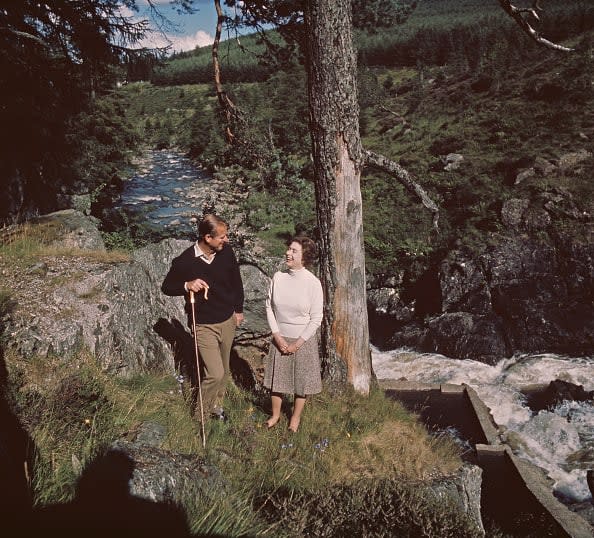
Queen Elizabeth II and Prince Philip, the Duke of Edinburgh, walking on their Balmoral Estate in Scotland, on their Silver Wedding anniversary year, UK, 27th September 1972.
Get the Daily Beast's biggest scoops and scandals delivered right to your inbox. Sign up now.
Stay informed and gain unlimited access to the Daily Beast's unmatched reporting. Subscribe now.
